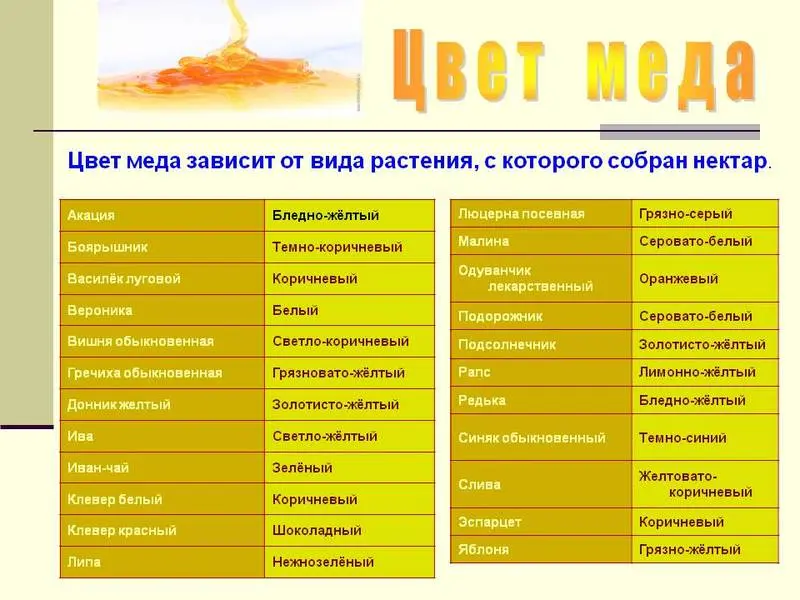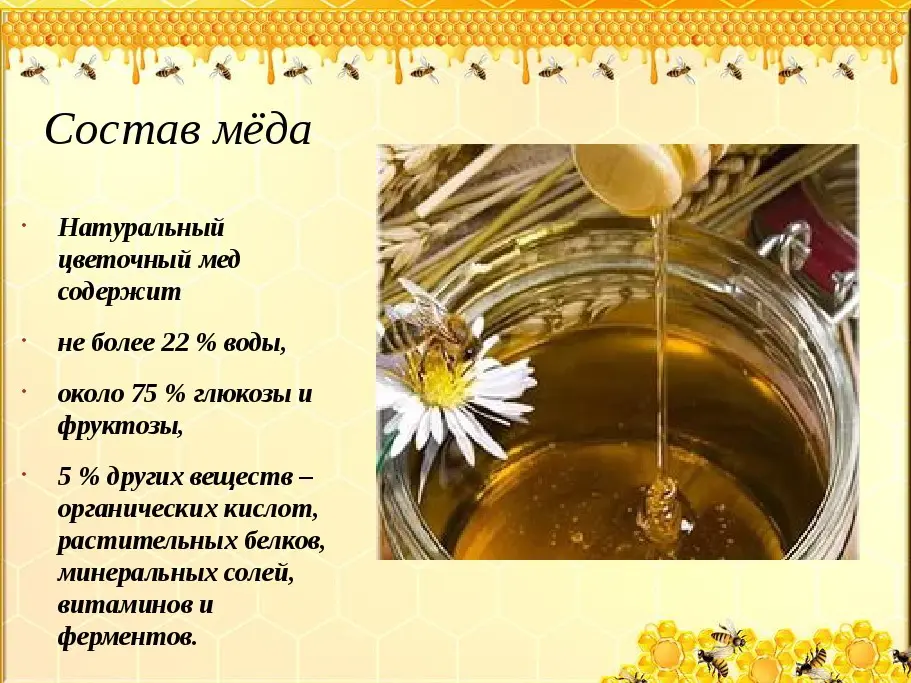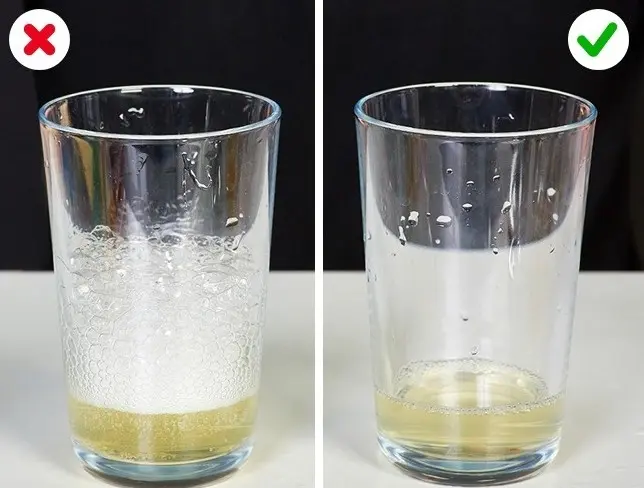Contents
From time immemorial, honey has been considered a miraculous remedy that helps strengthen the immune system and increase the body’s resistance to many diseases. Unfortunately, today in stores and on the market you can often find a counterfeit product. How to check the quality of honey at home and not fall for the bait of scammers, we will tell in today’s article.
Signs of poor quality honey
What is honey? It is a sweet, viscous liquid based on flower nectar processed by bees. According to the type of source, flower, honeydew and mixed varieties are distinguished. A product obtained from one type of vegetation is called monofloral, from two or more – polyfloral. For example, linden, acacia and buckwheat species are very popular.
There are other classifications as well. So, the processed flower nectar is classified according to the regional feature or geographical location of the bee farm. On the shelves in the store you can find Altai, Bashkir, Tambov, Chinese, Indian, French and even Colombian varieties. On a technological basis, honeycomb, sectional, pressed and centrifugal honey is distinguished.
Beekeeping as a separate branch of agriculture is considered a very promising and profitable business area. But even here, fraud was not avoided: the variety of varieties and types of honey allows you to pass off a fake as a natural product.

In some cases, you can identify a fake by eye. The main signs of counterfeiting include:
- lack of a characteristic aroma;
- heterogeneity of the sweet mass;
- crystal clear or amber luster;
- whitish tint on the surface;
- the presence of foam when pouring from one container to another.
A sign of a fake can be too bitter or, conversely, too sugary taste. If, when weighing 1 liter of honey, the scales showed a value of less than 1,4 kg, it is better to refuse such a product.
Video “Checking honey for quality at home”
This video shows some simple but very effective ways to determine the naturalness of a product.
Checking the product by external signs
Many do not know how to check the quality of honey at home. As it turned out, you can find out whether real honey is by its external signs.
Taste
The very first rule is to taste the viscous liquid. A sugary-sweet or frankly tasteless mass is a clear fake. Real honey has a pronounced tart taste. Some varieties have a slight pungency or bitterness.
By color and shade
The next test criterion is the shade and color of the product. Due to the huge variety of species and varieties, it is almost impossible to determine the exact color of honey. For example, the buckwheat variety is distinguished by a dirty yellow color, linden – light golden, sweet clover – golden yellow, acacia – pale yellow, clover – pale amber. The color of the product depends on the initial shade of the flower nectar.
We recommend paying attention not to the color of honey, but to the state of its shade. Even slight turbidity is a sign of the presence of foreign or chemical additives.
Author’s advice

By consistency
The consistency of real honey can vary. A fresh product is characterized by a liquid and viscous homogeneous consistency, while an “old” product has a crystallized form. Flower nectar processed by insects consists of water (22%), glucose and fructose (75%), other organic substances (more than 5%).
In the process of “aging” crystals begin to form from glucose and fructose. Crystals from glucose settle to the bottom of the jar, crystal-like elements saturated with fructose, on the contrary, rise to the surface. Crystallization of the sweet viscous mass is a natural process. The presence of small pieces of wax and pollen impurities is considered quite acceptable. But insoluble grains resembling plastic indicate a fake product.

By density and viscosity
Natural honey is characterized by high viscosity and density. Do a simple experiment with a spoon and a plate. The natural product flowing down from the spoon does not spread, but is collected in a slide in the center of the plate. Fake immediately spreads over the entire surface of the plate.
Have you noticed that winter honey does not crystallize? Lack of crystallization may be a sign of a fake or low-quality product. A low-quality product means honey that was heated during the pasteurization stage.
Fragrance
Many mistakenly assume that honey should smell like sweetness, herbs or flowers. The flower nectar processed by bees has a specific tart aroma, in which notes of wax are captured. If the honey mass smells of burnt sugar or sweet aromas, this is a fake. The smell of burnt sugar or caramel indicates the presence of granulated sugar.
A sweet aroma can be a sign of added aromatic impurities.
Determination of the naturalness of honey by improvised means
There are many methods for determining the authenticity of honey with available household tools. Consider the most effective of them.
With the help of iodine
Pour 100 ml of warm water into a glass beaker. Dissolve in liquid 1 tsp. sweet mass. Now take a vial of iodine and drop a few drops of the solution into a glass. If the liquid in the glass turns blue, it is safe to say that flour or starch has been added to the processed flower nectar.
With the help of bread
The “participant” of the next experiment will be bread. Pour some sweet honey into a saucer and cover it with bread. After half an hour, look at the bread. Real honey will be absorbed into the pores of the bread without disturbing its structure and integrity. A fake or diluted product will remain on the plate. At the same time, the bread will soften and become like gruel.
With the help of water
Pour boiling water into a glass and dip a spoonful of honey into it. A natural product will dissolve, a fake one will sink to the bottom and remain there lying in a slide.
With vinegar
Stir in warm water (125 ml) a spoonful of sweet viscous mass. Take 9% table vinegar. Add 1 tbsp. l. vinegar in a glass. A chemical reaction in the form of a hiss is considered a sign of the presence of chalk.

With chemical pencil
A chemical pencil will help determine the excess water in honey. The pure product does not leave marks on the pencil, diluted with water – stains the stylus in a purple hue.
The method of determining naturalness with a chemical pencil cannot be one hundred percent correct. According to scientists, the pencil lead can change color when interacting with glucose and fructose crystals.
Using a sheet of paper or tissue paper
For the next experiment, you will need a sheet of paper or a paper napkin. Spread the paper on a flat surface and put a few drops of honey on it. A wet spot formed on the paper is a sign of a poor-quality or highly water-diluted product.
With matches or fire
Did you know that natural honey does not burn? Drop a few drops of liquid or crystallized sweet mass onto a sheet of parchment paper. Set fire to honey and observe the reaction. Processed flower nectar without impurities will remain intact. Please note that the viscous mass should not change color or smell. The presence of changes in consistency or shade is a sign of a fake. If black soot or the smell of burnt sugar appears, the product was diluted with sugared water.
With heated stainless steel wire
For the next experiment, you will need a stainless steel wire. We lower the wire heated over the fire into a container with honey and carefully look at the result. The appearance of a dark sticky mass around the wire indicates that we have a fake.
With the help of milk
The easiest way to verify authenticity is to experiment with milk. In this case, the percentage of fat content of milk does not play any role. Add some honey to milk. When interacting with counterfeit milk curdles.
With ammonia
Another option for determining the naturalness of flower nectar processed by insects is the use of ammonia. Almost every home has a bottle of ammonia solution.
So, we take honey and distilled water. The amount of water should be 2 times more. Mix both components in one container. Now we take a bottle of ammonia and measure out a few drops of ammonia with a pipette. Add ammonia to the liquid and watch the chemical reactions. The appearance of a brown precipitate and / or a change in the color of the liquid is considered a clear sign of some additives. Most often it is molasses.

The methods described above for verifying the authenticity of honey cannot be called one hundred percent correct. Do not rule out the possibility of error. Yes, the product is different. Simple precautions will help you avoid buying counterfeit – buy honey from trusted manufacturers or responsible beekeepers.









